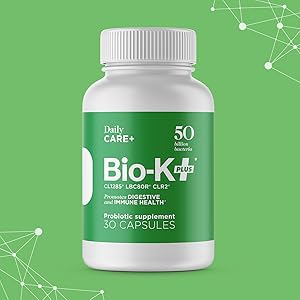 The overall prevalence for depressive disorders is estimated at about 10% of the general population with an annual incidence of 3% in men and almost 6% in women. The peak prevalence is between 25 and 45 years old.
The overall prevalence for depressive disorders is estimated at about 10% of the general population with an annual incidence of 3% in men and almost 6% in women. The peak prevalence is between 25 and 45 years old.
CLINIC:
The diagnosis of depression is clinical.
Depressive syndrome:
FUNDAMENTAL S YMPTOMS:
– Affective sphere: the mood is different from the usual mood, with a pejorative appreciation of oneself and the world, a pessimism and a feeling of guilt, a lack of interest for all usually enjoyable activities, a kind of emotional anesthesia which prevents the subject from feeling the affects of pleasure. Intensity can range from simple sadness to major moral pain. This discomfort may be associated with a suicidal ideation (fundamental to look for), which reflects the seriousness of the picture.
– Psychomotor sphere: the slowdown. It can be perceptible in the observation of the subject, in the way he has to move, in his mimicry. The cognitive functions are affected, the verbal flow is decreased, the thought is slowed down.There may be memory and attention disorders that cause the elderly person to develop dementia.
– Somatic sphere:
• asthenia sometimes at the forefront of complaints. Morning predominance, is not improved by rest, all the acts of daily life require an inordinate effort. This can lead to social and professional repercussions,
• appetite : anorexia is classic with weight loss that can be important. In some cases, bulimia is associated with hypersomnia and mood disorders,
• sleep : difficulty falling asleep, but especially nocturnal awakenings, morning insomnia (2-3 hours in the morning) with ruminations preventing falling asleep in severe depressions,
• libido disorders : decreased sexual desire, even frigidity or impotence,
• various neurovegetative disorders : constipation, hypotension, various pains.
Associated with this depressive syndrome, there are frequently symptoms of anxiety or anxiety symptomatic of depression, which must be distinguished from pure anxiety disorders, whose treatment is significantly different.
CLINICAL FEATURES:
– Stupid depression: major slowdown, to be differentiated from confusion.
– Anxious or agitated depression: the anxiety is at the peak of its intensity, depressive signs are secondary, the risk of suicidal rape or fugue is important.
– Delusional depression: the ideas are congruent with the mood with feelings of imaginary faults, of delusional guilt.Sometimes the delirium is independent of the mood and the table is close to that of the delirious puff.
– Masked depression: somatic disorders take center stage.
Evolutionary aspect of diagnosis:
PRIMARY FORMS:
Manic-depressive psychoses (PMD):
Two types according to the existence or not of manic episodes:
– Unipolar depression: more or less close recurrence of major or melancholic depressive episodes. There is a genetic factor: in family studies the risk is 10%, whereas it is 0.5 to 1% in the general population.
– Bipolar depression: manic episodes are inserted between depressive episodes. The hereditary aspect is more important (risk of morbidity is evaluated at 20%).
Dysthymia:
They evolve chronically more than 2 years, but with depressive symptoms of low intensity, nosographic category close to what are called depressive temperaments or neurotic depressions.
SECONDARY FEATURES TO SOMATIC PATHOLOGY:
– Endocrine: hyper- or hypothyroidism, Addison’s disease, Cushing’s syndrome, diabetes.
– General diseases: tuberculosis, neoplasias, hemopathy. The depressive episode can reveal the disease. This is important and emphasizes the importance of looking for organicity in depressions, especially when they are resistant to specific treatment.
– Iatrogenic secondary disorders: many molecules are incriminated: antihypertensives, neuroleptics, anorectics, interferon, etc.
– Depression secondary to psychic disorders, anxiety disorders, schizophrenia, but also addiction or alcoholism.
TRAITEMENT:
Where to treat?
If the depression is of low intensity, if the patient has an entourage capable of assuming it, the treatment can be done outpatient.
If there are signs of seriousness (suicidal ideation), signs of anxiety that can lead to abduction, major intensity, lack of family or social support, hospitalization is desirable, possibly by internment in the form of hospitalization at the request of a ters (HDT) or hospitalization of office (HO).
How to treat?
ANTIDEPRESSANTS:
There are several family: MAOIs, tricyclics, serotonin reuptake inhibitors (SSRIs), serotonin and norepinephrine reuptake inhibitors (INRS), nora-norergenic and serotonin-specific reuptake inhibitors (NASSA). Their effectiveness is comparable. The choice will be made according to the respect of the contraindications, the tolerance of the products and the habits of the practitioner.
The action period is 2 to 3 weeks. Early surveillance is important because of the so-called inhibition lift, ie the moment when the drug starts acting on the slowing down but not yet on the depressive core and where it there is a risk of suicidal act.
The duration of the admitted treatment for a first access is of 6 months minimum, 75% of the patients relapse in the year following a premature stop.
TRATING ADJUVANT:
– Neuroleptics: when delusional or hallucinatory psychotic symptomatology.
– Benzodiazepines and hypnotics: they should not be used in a systematic way, but it is sometimes necessary to use them for their sedative and anxiolytic effects, when the antidepressant at the beginning of treatment is insufficient on anxiety and sleep disorders.
EECTROCONVULSIVE THERAPY ( SISM THERAPY ):
When antidepressants are ineffective. This treatment is intended for severe and refractory depressions, exceptionally in first intention except in cases of absolute contraindications to drug treatment.
PSYCHOTHERAPY:
They can be proposed in association.








































